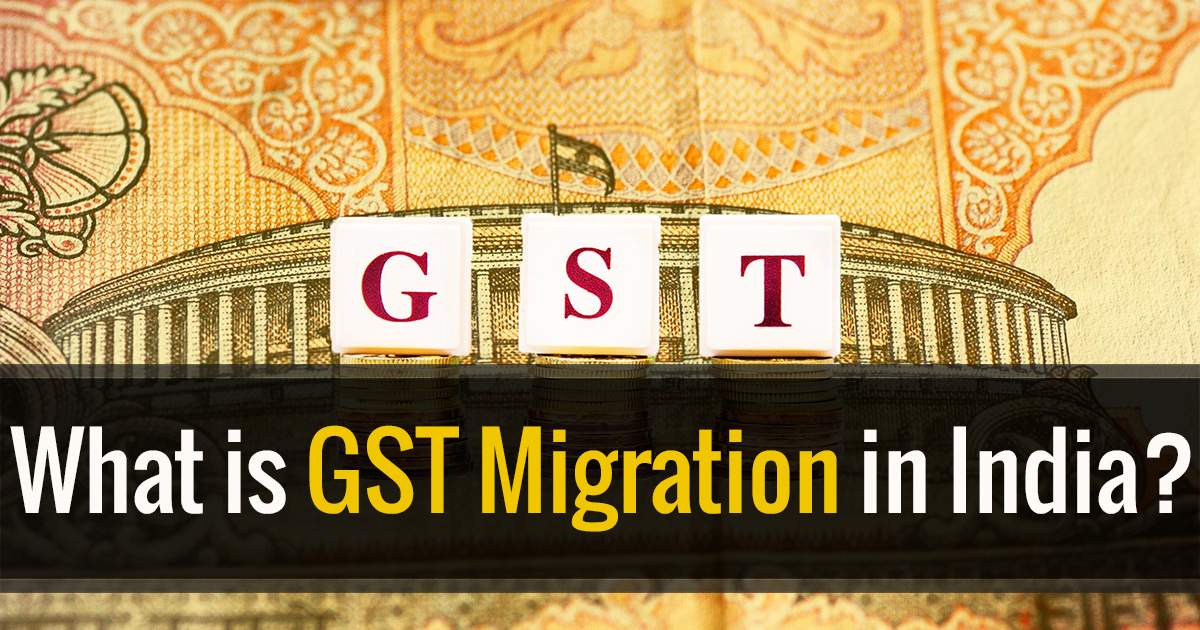
GST migration is nothing but the transfer of existing client data from the older system to the new system (GST system). The objective is to help existing clients to do business without any hassle, sort out inconsistencies and get ready for a smooth transition towards the implementation on the date April 1, 2017. This is going to be a challenging task and will give us a clear picture of where are all the things stand.
The process of migrating existing taxpayers to the goods and service tax (GST) network started on November 8, 2016, with the launching of a website (www.gst.gov.in) which will enable taxpayers located across different states to update their information and other relevant documents as a first step towards obtaining a registration number under GST. The government has launched the existing registration migration project under GST, an existing taxpayers registered under VAT/ Service Tax/ Excise have to migrate their registration as per allotted dates.
Mumbai has also seen a total of 81,500 companies which are migrated to the GST framework and the service tax department has been hoping to include the remaining 1.25 lakh companies into the framework. chief commissioner of the service tax department, Mumbai zone, Piyusha Patnaik told that “As per the revised estimate, there are 2,07,000 active companies in Mumbai and out of them around 81,000 have already migrated to the GST portal. This includes the over 15,000 companies that migrated during the five-day GST migration camp that ended today.” For this, there is a total of eight campaigns launched for the facilitation of the migration process. A widespread program is ongoing through various centres to share the knowledge and educate the taxpayers and the business community about the know-how’s of GST.
Following Points that Every Taxpayer must Know in the GST Migration:
- All existing taxpayers will be transferred to GST. Liquor dealers registered under the VAT are not required to migrate.
- There is no deemed enrollment under GST, all the taxpayers are expected to visit the GST common portal & enroll themselves at the GST common portal.
- Existing taxpayers are not required to enroll separately with Central and State authorities under GST.
- There is no fee or charge levied for the enrollment of a taxpayer under GST.
- All GST migration will take place online and there will be no paper-based enrollment.
- If a taxpayer has multiple businesses in one state then the taxpayer may register one business entity first. For the remaining business within the state, they have to get in touch with their respective Jurisdictional Authority.
- Existing Input Service Distributor (ISD) registrations are required to file a fresh application in the GST common portal for the State in which they desire to seek registration and the taxpayer needs to inform its Central Jurisdictional Authority.
Over the next couple of months, traders from other states will also be migrated to the GST network. Though GSTN is encouraging taxpayers in a particular state to register within the days allotted to a state, the window is open till 15th June 2017.
The GST network has already collected basic information such as PAN and names from existing databases of the income tax department but needs more detailed data such as place of operation, nature of business and bank account details before it can issue a GST ID number to the traders. GST ID is 15 digit number based on their income tax Permanent Account Number to operate under GST.
The traders need to collect their enrollment details, including username and password, from existing state commercial tax authorities. They will need to provide the mobile number and email address of the authorized signatory as all future correspondence from the GST portal will be sent to this registered mobile number and email address. The traders will then need to log in and fill up essentials.
After the implementation of GST, the government will audit of registered traders every year because the annual revenue threshold under GST has been fixed at Rs.20 lakhs (for northeast states it is 10 lakhs), some traders may go out of the tax net. For a not-for-profit entity incorporated in March 2013, has been set up primarily to provide IT infrastructure and services to the central and state governments, taxpayers and other stakeholders for implementation of GST. It has also been allowed to partner with other agencies for creating an efficient and user-friendly GST eco-system.